
Ambergris Caye: A Tropical Paradise in Belize
Discover Ambergris Caye: Belize's largest island, famous for its white-sand beaches, vibrant marine life, and the charming town of San Pedro. Perfect for divers, snorkelers, and beach lovers.
Ambergris Caye, the largest island in Belize, is a tropical paradise that offers a perfect blend of natural beauty and vibrant culture. The island is known for its stunning white-sand beaches, crystal-clear turquoise waters, and lush palm trees swaying in the gentle breeze. As part of the Belize Barrier Reef, the second largest coral reef system in the world, Ambergris Caye is a haven for divers and snorkelers. The underwater world here is teeming with colorful fish, corals, and marine life, making it a must-visit destination for nature lovers and adventure seekers. San Pedro, the island's main town, retains a charming, laid-back vibe with its sandy streets and friendly locals. You will find a variety of accommodations ranging from luxurious beachfront resorts to cozy, budget-friendly lodges. The town offers an array of dining options, featuring fresh seafood and local Belizean cuisine, as well as international flavors. San Pedro's nightlife is lively, with beach bars, live music, and cultural events that showcase the island's rich heritage. Apart from water activities, Ambergris Caye also offers opportunities for exploration and relaxation. Take a boat tour to the Hol Chan Marine Reserve and Shark Ray Alley, where you can swim with nurse sharks and rays. Visit the nearby Bacalar Chico National Park and Marine Reserve, a UNESCO World Heritage site, for a glimpse of the island's diverse ecosystems. Kayaking, paddleboarding, and windsurfing are popular activities in the calm lagoon waters. For those who prefer a more leisurely pace, simply unwind on the beach, soaking up the sun and the island's serene ambiance.
Local tips in Ambergris Caye
- Pack reef-safe sunscreen to protect the delicate marine environment.
- Rent a golf cart for easy island exploration; it's the preferred mode of transport.
- Visit from November to April for the best weather and fewer mosquitos.
- Bring cash as many small businesses on the island do not accept credit cards.
- Book diving and snorkeling tours in advance to secure your spot, especially during peak season.
Ambergris Caye: A Tropical Paradise in Belize
Ambergris Caye, the largest island in Belize, is a tropical paradise that offers a perfect blend of natural beauty and vibrant culture. The island is known for its stunning white-sand beaches, crystal-clear turquoise waters, and lush palm trees swaying in the gentle breeze. As part of the Belize Barrier Reef, the second largest coral reef system in the world, Ambergris Caye is a haven for divers and snorkelers. The underwater world here is teeming with colorful fish, corals, and marine life, making it a must-visit destination for nature lovers and adventure seekers. San Pedro, the island's main town, retains a charming, laid-back vibe with its sandy streets and friendly locals. You will find a variety of accommodations ranging from luxurious beachfront resorts to cozy, budget-friendly lodges. The town offers an array of dining options, featuring fresh seafood and local Belizean cuisine, as well as international flavors. San Pedro's nightlife is lively, with beach bars, live music, and cultural events that showcase the island's rich heritage. Apart from water activities, Ambergris Caye also offers opportunities for exploration and relaxation. Take a boat tour to the Hol Chan Marine Reserve and Shark Ray Alley, where you can swim with nurse sharks and rays. Visit the nearby Bacalar Chico National Park and Marine Reserve, a UNESCO World Heritage site, for a glimpse of the island's diverse ecosystems. Kayaking, paddleboarding, and windsurfing are popular activities in the calm lagoon waters. For those who prefer a more leisurely pace, simply unwind on the beach, soaking up the sun and the island's serene ambiance.
When is the best time to go to Ambergris Caye?
Iconic landmarks you can’t miss
Secret Beach Belize
Experience the serene beauty of Secret Beach Belize, a hidden paradise with stunning waters and delicious local cuisine.
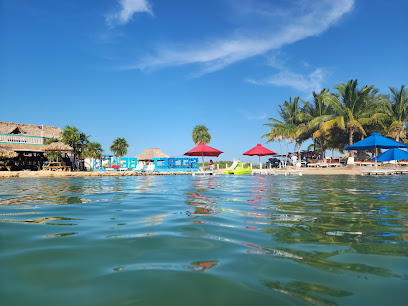
Ramons Village Resort
Experience the vibrant culture and breathtaking beauty of Belize at Ramons Village Resort, the ultimate getaway on San Pedro's stunning shores.

Hol Chan Marine Reserve
Explore the stunning marine biodiversity at Hol Chan Marine Reserve, a UNESCO World Heritage Site in Belize, perfect for snorkeling and diving adventures.

The Belize Sign Monument
Discover the vibrant Belize Sign Monument in Belize City, a perfect photo op and cultural landmark showcasing the essence of this Caribbean paradise.
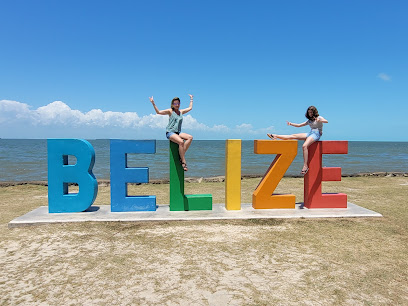
Coco Beach Resort
Discover the serene beauty and vibrant adventures at Coco Beach Resort, a premier destination on Ambergris Caye, Belize.
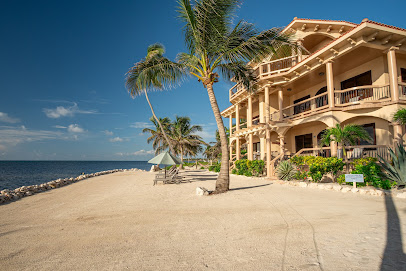
Baron Bliss lighthouse
Discover the Baron Bliss Lighthouse in Belize City, a historic landmark offering stunning views and rich maritime heritage.

PUR Boutique Cabanas & Taco Bar
Discover the perfect blend of relaxation and culinary delight at PUR Boutique Cabanas & Taco Bar on Ambergris Caye, Belize.
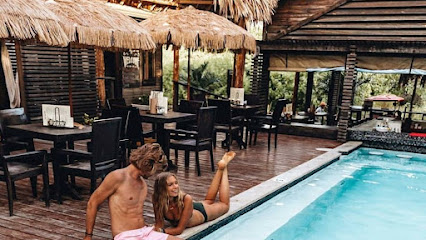
Alaia Belize, Autograph Collection
Experience unparalleled luxury and breathtaking views at Alaia Belize, a premier resort on the beautiful Ambergris Caye, perfect for relaxation and adventure.

Portofino Beach Resort
Experience the serene beauty and luxurious comfort of Portofino Beach Resort, a tropical paradise in San Pedro, Belize, perfect for relaxation and adventure.
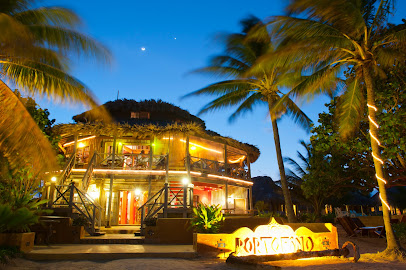
Caribbean Villas Hotel
Experience the beauty of San Pedro Belize at Caribbean Villas Hotel, where stunning views and local culture come together for an unforgettable escape.

Lina Point Overwater Belize
Discover the enchanting beauty and luxury of Lina Point Overwater Belize, where breathtaking views meet unparalleled comfort in the heart of San Pedro.

Belizean Shores Resort
Experience the beauty and adventure of Ambergris Caye at Belizean Shores Resort, where luxury meets the vibrant culture of Belize.

Pelican Reef Villas Resort
Discover the tranquil paradise of Pelican Reef Villas Resort in San Pedro, Belize, where luxury meets breathtaking Caribbean views.
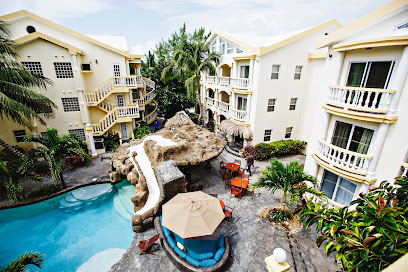
Pedro's Inn
Experience the vibrant culture of San Pedro at Pedro's Inn, a budget-friendly hostel perfect for adventurous travelers seeking connection and comfort.

Ak'bol Yoga Retreat & Eco-Resort
Experience tranquility at Ak'bol Yoga Retreat & Eco-Resort, where wellness meets the beauty of Ambergris Caye's stunning nature.

Unmissable attractions to see
Lamanai Archaeological Reserve
Uncover the rich heritage of the ancient Maya at Lamanai Archaeological Reserve, a breathtaking site nestled in the Belizean jungle.
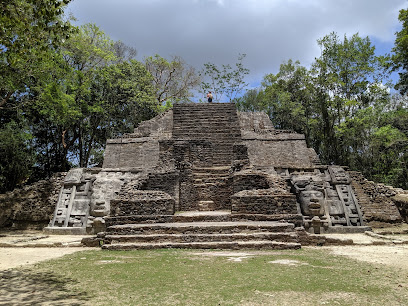
Baron Bliss lighthouse
Discover the breathtaking views and rich history at the iconic Baron Bliss Lighthouse in Belize City, a must-visit for every traveler.
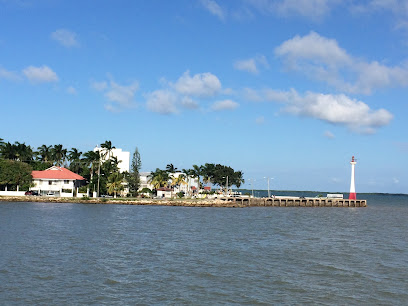
Ragga Sailing Adventures
Experience the beauty of the Caribbean with Ragga Sailing Adventures, the top choice for unforgettable sailing and snorkeling tours in Caye Caulker.
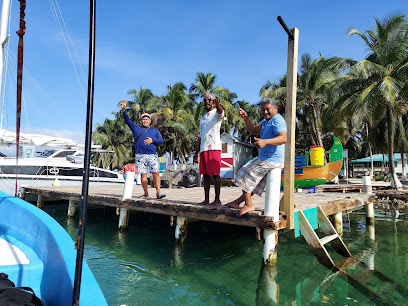
Chuck & Robbie's - Ambergris Caye Diving & PADI Scuba Instruction
Explore the vibrant underwater wonders of Ambergris Caye with Chuck & Robbie's exceptional diving and snorkeling experiences.
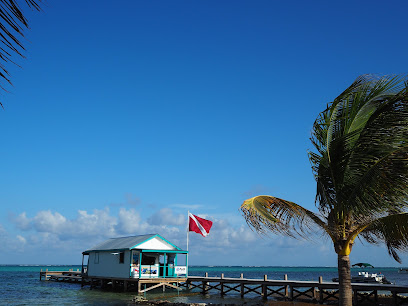
White Sands Dive Shop
Discover the underwater wonders of Belize at White Sands Dive Shop, your ultimate destination for scuba diving adventures on Ambergris Caye.
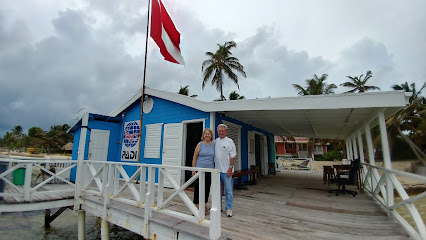
Ak'bol Yoga Retreat & Eco-Resort
Discover serenity and wellness at Ak'bol Yoga Retreat & Eco-Resort on Ambergris Caye, Belize, an eco-friendly paradise for relaxation and rejuvenation.

Iguana Eco Sanctuary
Discover the Iguana Eco Sanctuary in San Pedro, a captivating museum dedicated to the conservation of iguanas and local wildlife in Belize.
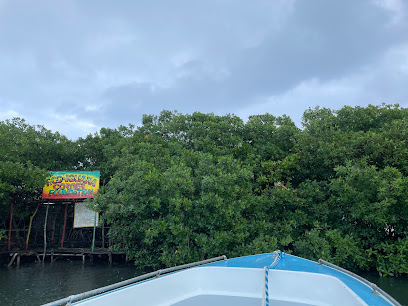
Stingray Beach
Explore the enchanting Stingray Beach in Caye Caulker, Belize—swim with stingrays and dive into a world of vibrant marine life.
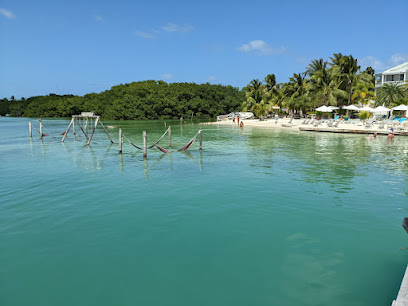
Elite Adventures Belize
Discover unparalleled underwater adventures and exquisite local cuisine at Elite Adventures Belize on Ambergris Caye.
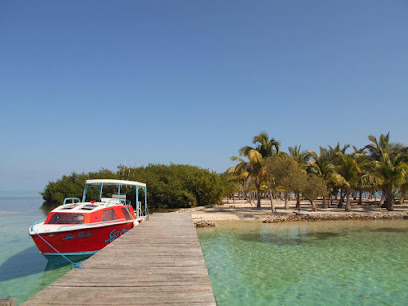
Tiburon Rum Tasting Room
Experience the authentic taste of Belizean rum at Tiburon Rum Tasting Room in San Pedro, a delightful journey through local flavors.
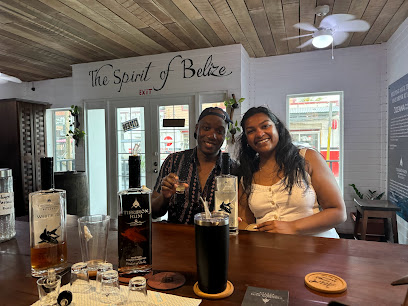
Shark Ray Alley
Experience the thrill of swimming with nurse sharks and stingrays in the pristine waters of Shark Ray Alley, a top attraction in Belize.
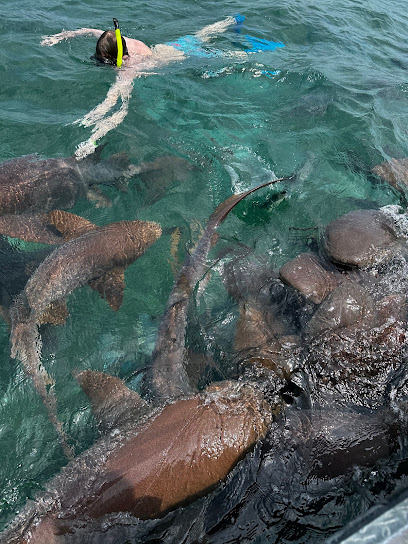
TnT Dive Pros
Experience breathtaking underwater adventures with TnT Dive Pros in San Pedro, Belize - a diver's paradise filled with vibrant marine life.
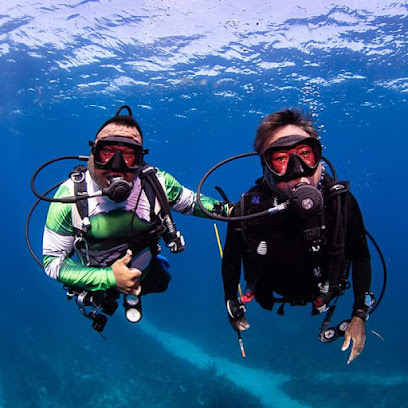
Belize Guide Co | Snorkel and Fishing Tours
Discover the vibrant marine life and stunning coral reefs of Belize with Belize Guide Co's premier snorkeling and fishing tours.
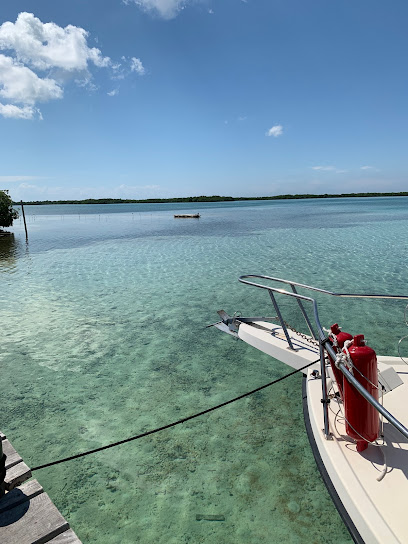
House of Culture
Explore Belize's vibrant culture and history at the House of Culture in San Pedro, a unique museum experience showcasing local art and heritage.
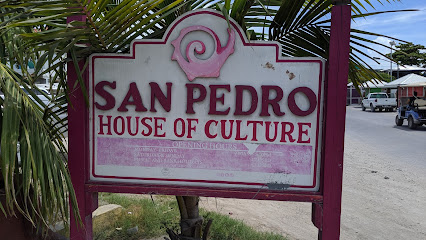
Iguana Reserve
Experience the tranquility of Iguana Reserve in San Pedro, Belize, a sanctuary for wildlife enthusiasts and nature lovers alike.
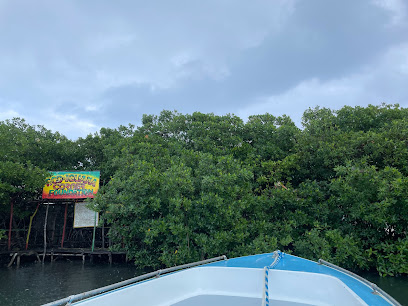
Essential places to dine
Elvi's Kitchen
Experience the authentic flavors of Central America at Elvi's Kitchen in San Pedro, where fresh seafood meets vibrant culture.

Palapa Bar and Grill
Experience the perfect blend of delicious cuisine, live music, and stunning waterfront views at Palapa Bar and Grill in San Pedro.
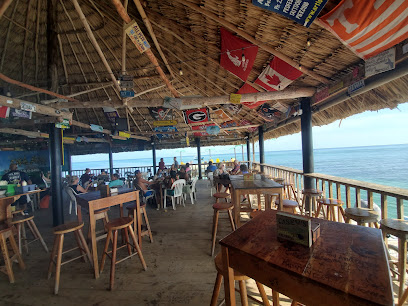
Blue Water Grill
Experience exquisite seafood and vibrant Belizean flavors at Blue Water Grill while enjoying stunning ocean views.

El Fogon Restaurant
Experience authentic Belizean flavors at El Fogon Restaurant in San Pedro - a culinary gem on Ambergris Caye.
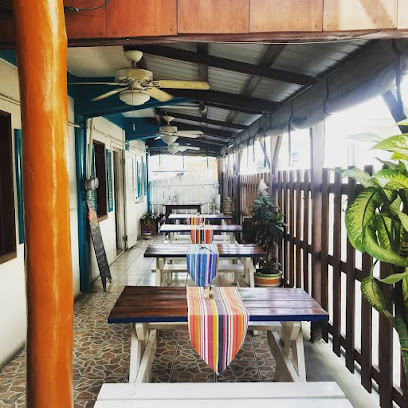
Estel's Dine By the Sea
Experience authentic Belizean cuisine with stunning beachfront views at Estel's Dine By the Sea in San Pedro.
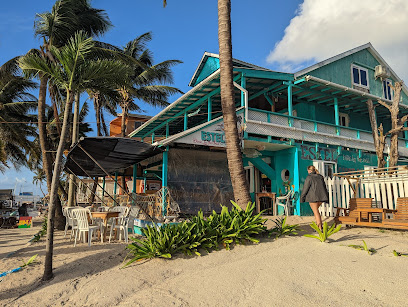
Pupuseria Salvadoreno
Savor authentic pupusas and traditional Salvadoran dishes in a cozy setting at Pupuseria Salvadoreno in San Pedro.
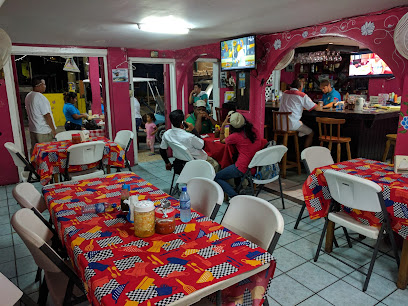
The Hidden Treasure Restaurant & Lounge
Experience exquisite dining at The Hidden Treasure Restaurant & Lounge in San Pedro - a blend of local flavors and international cuisine awaits you.
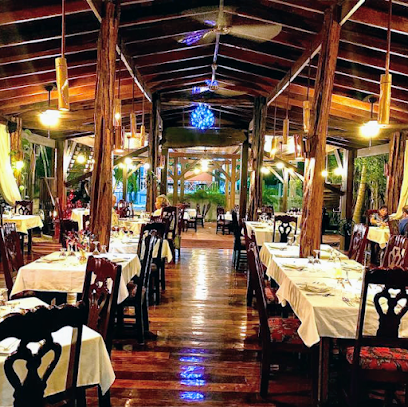
Robin's Kitchen
Discover authentic Jamaican cuisine at Robin's Kitchen in San Pedro - where every meal is a celebration of flavor and hospitality.
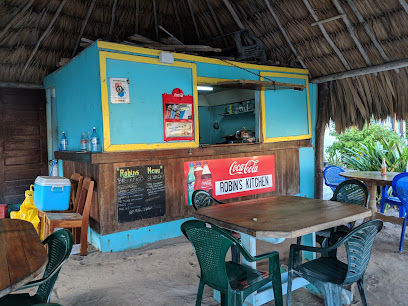
Sandy Toes Beach Bar & Grill
Experience tropical dining at Sandy Toes Beach Bar & Grill in San Pedro – where delicious cuisine meets stunning ocean views.
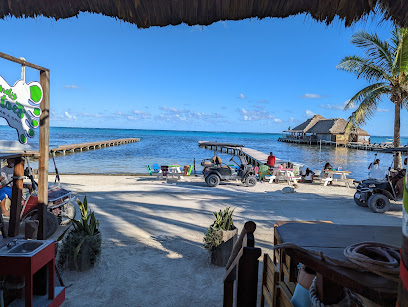
Caliente Restaurant
Experience the vibrant flavors of Belize at Caliente Restaurant in San Pedro, where every dish tells a story.
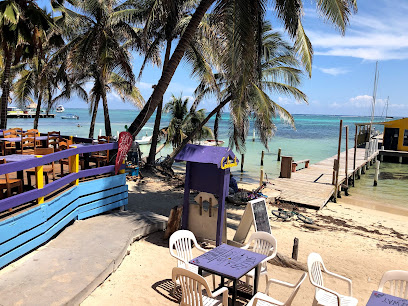
Hungry Grouper
Experience authentic Belizean seafood at Hungry Grouper in San Pedro – where fresh flavors meet island charm.
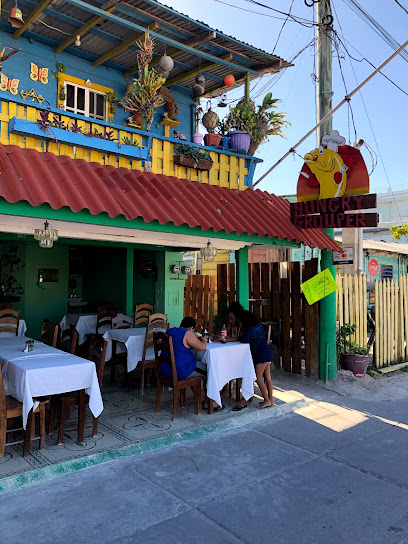
Wild Mangos
Experience the vibrant flavors of Latin American cuisine at Wild Mangos in San Pedro – a culinary haven for every food lover.
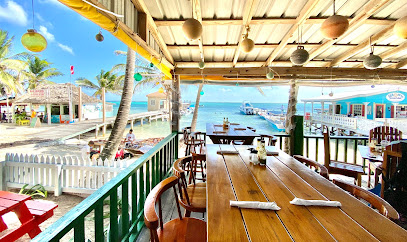
Aji Tapa Bar and Restaurant
Discover Aji Tapa Bar and Restaurant: Where Belizean Flavors Meet Tropical Charm in San Pedro.
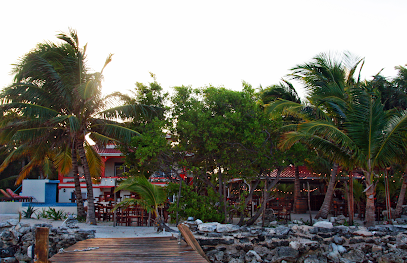
Lily's Treasure Chest
Discover fresh seafood delights at Lily's Treasure Chest in San Pedro—where every meal is a celebration of Caribbean flavors.
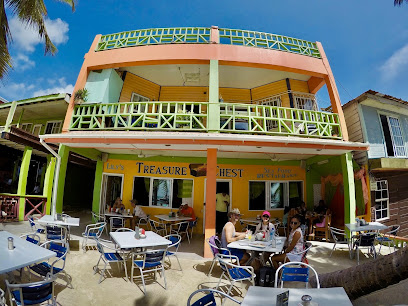
Rain | Restaurant & Rooftop Terrace
Experience exquisite dining at Rain Restaurant & Rooftop Terrace in Ambergris Caye—where breathtaking views meet culinary artistry.
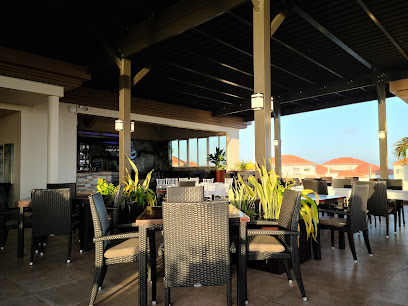
Markets, malls and hidden boutiques
Caye Mart
Explore local flavors and essentials at Caye Mart, San Pedro's vibrant supermarket with a wide selection of products.
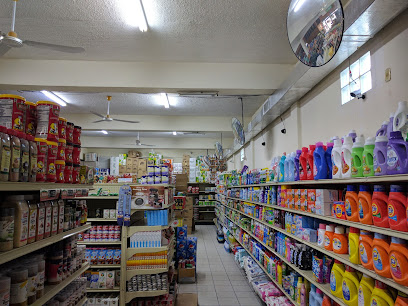
Belizean Breezes Soap Co
Explore Belizean Breezes Soap Co - a charming gift shop on Ambergris Caye offering handcrafted soaps and unique local products for a memorable shopping experience.
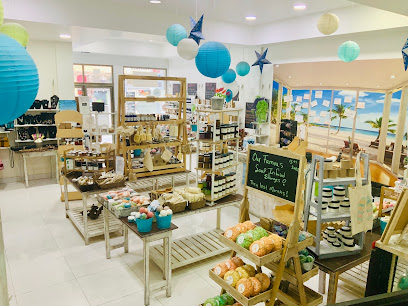
The Belikin Store
Explore The Belikin Store in San Pedro for unique Belizean souvenirs and a refreshing taste of local culture in every sip.

Rock's Shopping Center
Discover affordable shopping at Rock's Shopping Center, San Pedro's vibrant discount supermarket, offering local flavors and daily essentials.

D&G Fine Jewelry
Discover exquisite handcrafted jewelry at D&G Fine Jewelry in San Pedro, Belize, where artistry meets culture in every unique piece.
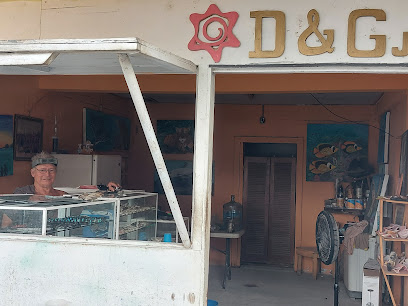
Love Belize Gift Shop
Discover unique souvenirs and local crafts at Love Belize Gift Shop in San Pedro, the perfect place to capture the spirit of Belize.
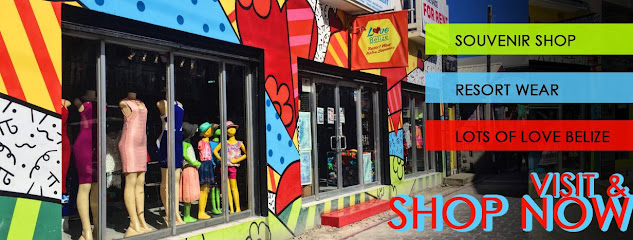
Di Bush Unbelizeable Gift Store
Explore the charm of Belize at Di Bush Unbelizeable Gift Store, a haven for unique gifts and handcrafted treasures in San Pedro.
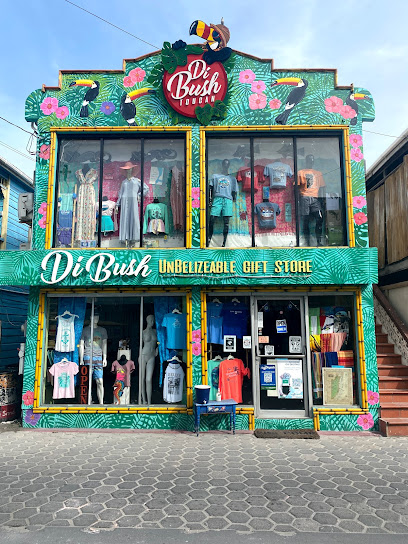
The Little Old Craft Shop
Explore the vibrant artistry of Belize at The Little Old Craft Shop, a haven for unique handmade crafts and local treasures.
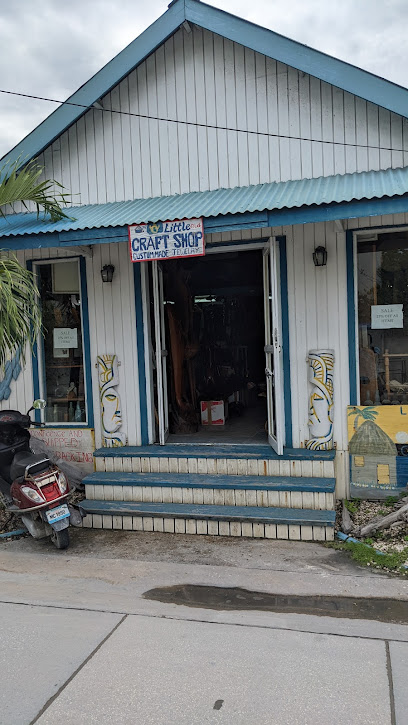
Pink Boutique - San Pedro
Shop in style at Pink Boutique - San Pedro, your go-to destination for trendy beachwear and accessories in Belize.
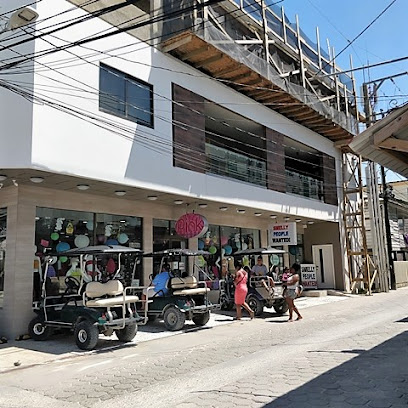
San Pedro Originals Art Gallery
Explore local artistry and vibrant culture at San Pedro Originals Art Gallery, a treasure trove of unique gifts and stunning artworks.
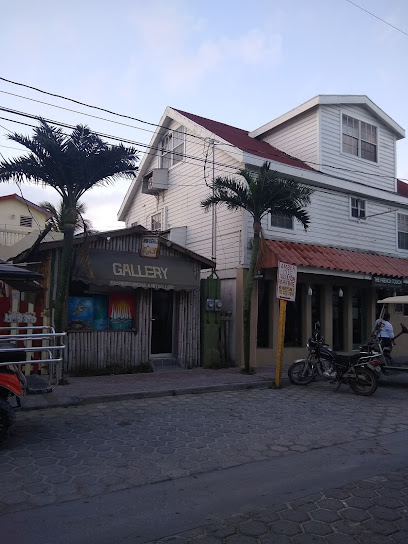
Style Us
Experience local fashion at Style Us Boutique in San Pedro, where beach clothing and accessories meet vibrant island style.

The Coconut Store
Explore The Coconut Store in San Pedro for local groceries, unique souvenirs, and a taste of Belize's vibrant culture.
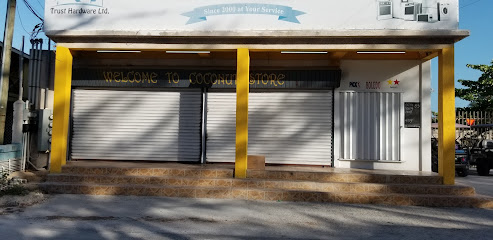
Jewel of The Sea Souvenirs and Gift Shop
Explore the vibrant and unique offerings at Jewel of The Sea Souvenirs and Gift Shop in San Pedro, Belize, a must-visit for unforgettable keepsakes.
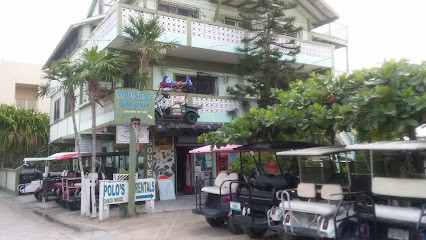
Glen's Gift Shop and Souvenirs
Explore Glen's Gift Shop for unique Belizean souvenirs and handcrafted gifts that embody the spirit of Ambergris Caye.

Mambo Chill Boutique
Explore vibrant styles and unique designs at Mambo Chill Boutique in San Pedro, Belize – your destination for fashionable souvenirs.
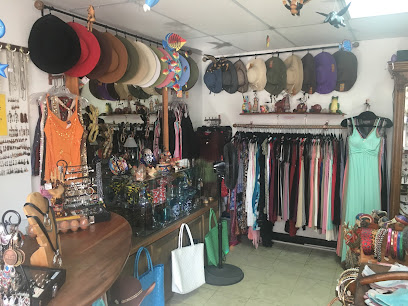
Essential bars & hidden hideouts
Palapa Bar and Grill
Experience the vibrant flavors and lively atmosphere at Palapa Bar and Grill, a must-visit culinary destination in San Pedro, Belize.
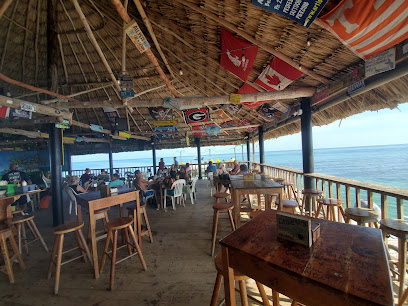
Crocs Sunset Sports Bar
Unwind at Crocs Sunset Sports Bar, where delicious food, live music, and a vibrant atmosphere create the perfect Belizean night out.
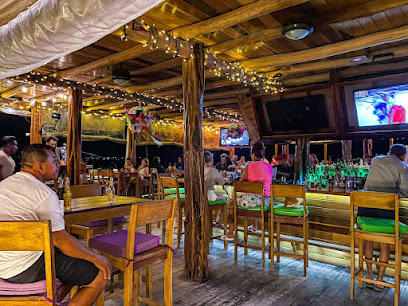
Wayo's Beach Bar
Experience the vibrant atmosphere and delectable flavors at Wayo's Beach Bar, a must-visit restaurant on the stunning shores of San Pedro.
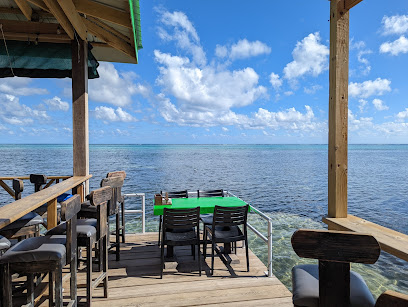
The Dive Bar
Discover the vibrant flavors and lively atmosphere of The Dive Bar, the ultimate beachside grill experience on Ambergris Caye, Belize.
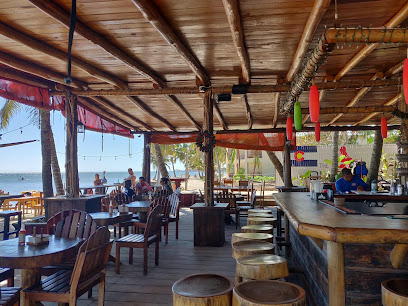
Carlo & Ernie's Runway Bar
Experience the best of Belizean cuisine at Carlo & Ernie's Runway Bar, where delicious grilled flavors meet a vibrant atmosphere overlooking the Caribbean.
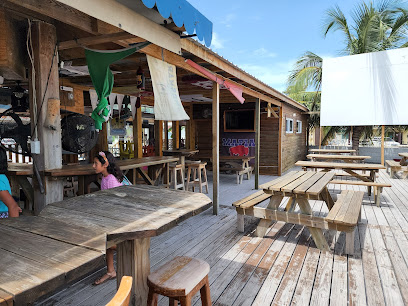
Rum Dog Bar and Grill
Discover the vibrant flavors and lively atmosphere at Rum Dog Bar and Grill, a must-visit dining destination in San Pedro, Belize.
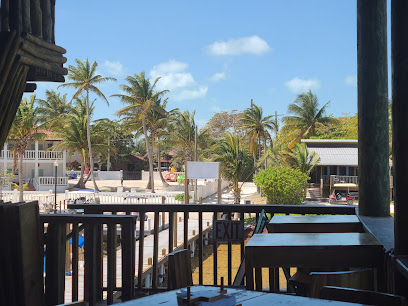
Moon Bar (Adults Only 18+)
Experience the ultimate adults-only pizza dining at Moon Bar in San Pedro, where gourmet flavors meet stunning Caribbean views.
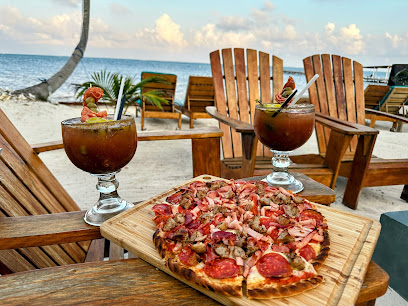
The Beach Bar & Grill
Experience the flavors of the Caribbean at The Beach Bar & Grill on Ambergris Caye, where delicious food meets stunning ocean views.

Stella's Sunset Wine Bar & Restaurant
Savor exquisite cuisine and breathtaking sunsets at Stella's Sunset Wine Bar & Restaurant in San Pedro, Belize - a must-visit culinary destination!

Playa Bar & Grill
Discover the perfect beachfront dining experience at Playa Bar & Grill in San Pedro, Belize, offering delicious grilled dishes and stunning sea views.
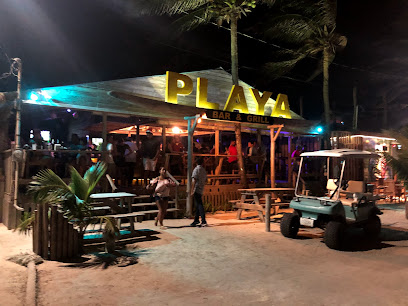
Coco's Loco Beach Bar
Experience the vibrant atmosphere and stunning ocean views at Coco's Loco Beach Bar on Ambergris Caye, the perfect tropical getaway for relaxation and fun.
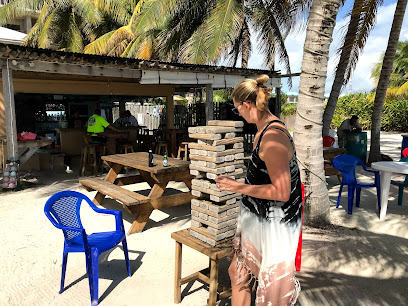
The Dog House Sports Lounge
Discover The Dog House Sports Lounge, a lively bar in San Pedro offering delicious food, refreshing drinks, and an inviting atmosphere for all visitors.
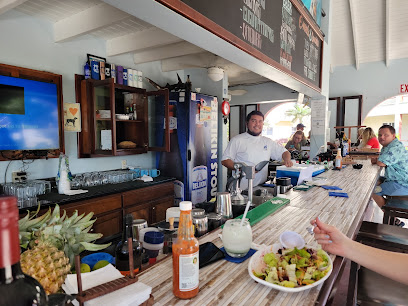
Sunset Lounge
Experience the vibrant atmosphere and stunning sunsets at Sunset Lounge, a premier bar in San Pedro, Belize, perfect for relaxation and fun.

Guapo's First and Last Stop
Experience the vibrant atmosphere of Guapo's First and Last Stop, where refreshing cocktails and stunning beach views await you in Ambergris Caye.
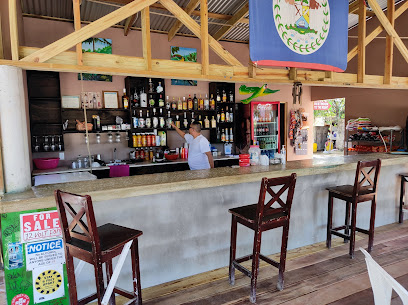
Happy Island Beach Bar & Grill
Experience the tropical allure of Happy Island Beach Bar & Grill on Ambergris Caye, where delicious food and breathtaking views await.
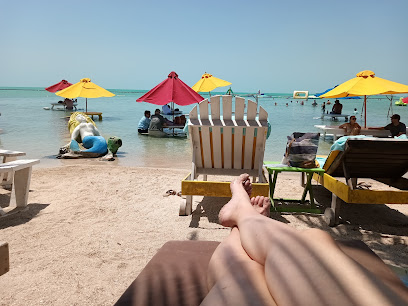
Local Phrases about Ambergris Caye
-
- HelloHola
[oh-lah] - GoodbyeAdiós
[ah-dee-ohs] - YesSí
[see] - NoNo
[noh] - Please/You're welcomePor favor/De nada
[por fah-vor/deh nah-dah] - Thank youGracias
[grah-see-ahs] - Excuse me/SorryDisculpe/Perdón
[dee-skool-peh/pehr-dohn] - How are you?¿Cómo estás?
[koh-moh ehs-tahs] - Fine. And you?Bien. ¿Y tú?
[byen. ee too] - Do you speak English?¿Hablas inglés?
[ah-blahs een-glehs] - I don't understandNo entiendo
[noh ehn-tee-ehn-doh]
- HelloHola
-
- I'd like to see the menu, pleaseMe gustaría ver el menú, por favor
[meh goo-stah-ree-ah behr ehl meh-noo, por fah-vor] - I don't eat meatNo como carne
[noh koh-moh kahr-neh] - Cheers!¡Salud!
[sah-loohd] - I would like to pay, pleaseMe gustaría pagar, por favor
[meh goo-stah-ree-ah pah-gahr, por fah-vor]
- I'd like to see the menu, pleaseMe gustaría ver el menú, por favor
-
- Help!¡Ayuda!
[ah-yoo-dah] - Go away!¡Vete!
[veh-teh] - Call the Police!¡Llama a la policía!
[yah-mah ah lah poh-lee-see-ah] - Call a doctor!¡Llama a un médico!
[yah-mah ah oon meh-dee-koh] - I'm lostEstoy perdido
[ehs-toy pehr-dee-doh] - I'm illEstoy enfermo
[ehs-toy ehn-fehr-moh]
- Help!¡Ayuda!
-
- I'd like to buy...Me gustaría comprar...
[meh goo-stah-ree-ah kohm-prahr...] - I'm just lookingSolo estoy mirando
[soh-loh ehs-toy mee-rahn-doh] - How much is it?¿Cuánto cuesta?
[kwan-toh kwehs-tah] - That's too expensiveEso es demasiado caro
[eh-soh ehs deh-mah-syah-doh kah-roh] - Can you lower the price?¿Puedes bajar el precio?
[pweh-dehs bah-hahr ehl pree-syoh]
- I'd like to buy...Me gustaría comprar...
-
- What time is it?¿Qué hora es?
[keh oh-rah ehs] - It's one o'clockEs la una
[ehs lah oo-nah] - Half past (10)Y media (10)
[ee meh-thyah (diez)] - MorningMañana
[mah-nyah-nah] - AfternoonTarde
[tahr-deh] - EveningNoche
[noh-cheh] - YesterdayAyer
[ah-yehr] - TodayHoy
[oy] - TomorrowMañana
[mah-nyah-nah] - 1Uno
[oo-noh] - 2Dos
[dohs] - 3Tres
[trehs] - 4Cuatro
[kwah-troh] - 5Cinco
[seen-koh] - 6Seis
[seys] - 7Siete
[syeh-teh] - 8Ocho
[oh-choh] - 9Nueve
[nweh-veh] - 10Diez
[dyehs]
- What time is it?¿Qué hora es?
-
- Where's a/the...?¿Dónde está...?
[dohn-deh ehs-tah] - What's the address?¿Cuál es la dirección?
[kwal ehs lah dee-rehk-syohn] - Can you show me (on the map)?¿Puedes mostrarme (en el mapa)?
[pweh-dehs mohs-trar-meh (ehn ehl mah-pah)] - When's the next (bus)?¿Cuándo es el próximo (autobús)?
[kwan-doh ehs ehl prohk-see-moh (ow-toh-boos)] - A ticket (to ....)Un boleto (a ...)
[oon boh-leh-toh (ah ...)]
- Where's a/the...?¿Dónde está...?
History of Ambergris Caye
-
Long before the arrival of Europeans, Ambergris Caye was part of the extensive trade network of the ancient Maya civilization. Archaeological evidence points to the island being a bustling center for commerce, with the Maya trading goods such as obsidian, jade, and cacao. The ruins of Marco Gonzalez and San Pedro are testament to this rich historical tapestry, featuring remnants of temples, pottery, and tools that date back to 200 BC.
-
In the 16th century, the Spanish arrived on the shores of what is now Belize, although they showed limited interest in Ambergris Caye due to its lack of precious metals. However, the island did not escape their influence entirely. Spanish explorers and missionaries occasionally visited, interacting with the indigenous Maya and leaving behind traces of their presence in the form of shipwrecks and artifacts.
-
Ambergris Caye's strategic location along the Caribbean made it a favored hideout for pirates and buccaneers during the 17th and 18th centuries. The shallow waters and numerous lagoons provided perfect cover for these sea rogues, who used the island as a base to launch attacks on Spanish galleons filled with New World treasures. Legends of buried pirate treasure still captivate the imagination of visitors today.
-
In the late 18th century, the Garifuna people, descendants of African slaves and indigenous Carib Indians, were exiled from the island of St. Vincent by the British. Many sought refuge along the coast of Central America, including Ambergris Caye. The Garifuna have since become an integral part of Belize's cultural mosaic, contributing their unique music, dance, and culinary traditions to the island's vibrant cultural landscape.
-
The 19th century saw the establishment of British settlements on Ambergris Caye, with an economy initially driven by logging and agriculture. The town of San Pedro, named after Saint Peter, the patron saint of fishermen, was officially founded in 1848 by Mestizo refugees fleeing the Caste War in the Yucatán Peninsula. San Pedro gradually evolved from a small fishing village into a bustling town, renowned for its welcoming atmosphere and stunning natural beauty.
-
The latter half of the 20th century marked a significant shift in Ambergris Caye's economy with the rise of tourism. The island's pristine beaches, coral reefs, and abundant marine life, particularly the Great Blue Hole and the Belize Barrier Reef, attracted international attention. San Pedro transformed into a premier tourist destination, offering a mix of luxury resorts, diving excursions, and vibrant nightlife, while still retaining its charming, laid-back vibe.
-
In recent decades, there has been a growing focus on preserving Ambergris Caye's natural and cultural heritage. Initiatives include the establishment of marine reserves, such as the Hol Chan Marine Reserve, and community-driven conservation programs aimed at protecting the island's delicate ecosystems. These efforts seek to ensure that Ambergris Caye remains a paradise for future generations, balancing development with sustainability.
Ambergris Caye Essentials
-
Ambergris Caye is accessible primarily via air and sea. The nearest international airport is Philip S. W. Goldson International Airport (BZE) in Belize City. From there, you can take a domestic flight with Tropic Air or Maya Island Air to San Pedro, the main town on Ambergris Caye. The flight takes about 15 minutes. Alternatively, you can travel by water taxi from Belize City to San Pedro, which takes approximately 1.5 to 2 hours. Water taxi services are operated by companies such as Belize Water Taxi and Ocean Ferry Belize.
-
Once on Ambergris Caye, the most common modes of transportation are golf carts, bicycles, and taxis. Golf carts can be rented from various rental agencies in San Pedro. Bicycles are also available for rent and are a great way to explore the island at a leisurely pace. Taxis are readily available, especially in San Pedro, and can be hailed on the street or arranged through your accommodation. Walking is also a viable option for short distances, particularly in the central areas of San Pedro.
-
The official currency in Belize is the Belize Dollar (BZD), which is pegged at 2 BZD to 1 USD. US Dollars are widely accepted throughout Ambergris Caye, and many prices are quoted in both currencies. Credit cards are accepted in most hotels, restaurants, and larger shops, but it is advisable to carry cash for smaller establishments and street vendors. ATMs are available in San Pedro, but it is wise to withdraw sufficient cash in Belize City or at the airport before traveling to the island.
-
Ambergris Caye is generally considered safe for tourists, but it is important to take standard precautions. Avoid walking alone at night in secluded areas and keep valuable belongings secure. While San Pedro is relatively safe, there have been occasional reports of petty theft targeting tourists, particularly in busy areas and on the beach. It is advisable to stay vigilant and aware of your surroundings. Stick to well-lit and populated areas after dark, and use reliable transportation options.
-
In case of emergency, dial 911 for immediate assistance. San Pedro has a police station and a medical clinic, the Dr. Otto Rodriguez San Pedro Polyclinic II, which can handle minor medical issues. For more serious medical emergencies, patients may need to be transferred to Belize City. It is recommended to have travel insurance that covers medical emergencies and evacuation. Pharmacies in San Pedro are well-stocked with over-the-counter medications for minor health issues.
-
Fashion: Do dress casually and comfortably, but avoid wearing overly revealing clothing, especially in town. Lightweight, breathable fabrics are recommended due to the tropical climate. Religion: Do respect local customs and traditions. When visiting churches, dress modestly and cover your shoulders. Public Transport: Do be courteous and patient when using water taxis and other public transport. Greetings: Do greet people with a friendly 'hello' or 'good morning'. Belizeans are generally warm and welcoming. Eating & Drinking: Do try local dishes and seafood. Don’t drink tap water; opt for bottled or filtered water instead.
-
To experience Ambergris Caye like a local, visit the local markets and street vendors for fresh produce and traditional Belizean snacks. Engage with locals, as they are often friendly and willing to share insights about the island. Don't miss out on trying the island's signature dish, 'rice and beans with stewed chicken'. Participate in local events and festivals, such as the annual Lobster Fest in June. Explore the less touristy northern and southern parts of the island for a more authentic experience.
Trending Landmarks in Ambergris Caye
-
Secret Beach Belize
-
Ramons Village Resort
-
Hol Chan Marine Reserve
-
The Belize Sign Monument
-
Coco Beach Resort
-
Baron Bliss lighthouse
-
PUR Boutique Cabanas & Taco Bar
-
Alaia Belize, Autograph Collection
-
Portofino Beach Resort
-
Caribbean Villas Hotel
-
Lina Point Overwater Belize
-
Belizean Shores Resort
-
Pelican Reef Villas Resort
-
Pedro's Inn
-
Ak'bol Yoga Retreat & Eco-Resort
Nearby Cities to Ambergris Caye
-
Things To Do in Caye Caulker
-
Things To Do in Belize City
-
Things To Do in Corozal Town
-
Things To Do in Orange Walk Town
-
Things To Do in Dangriga
-
Things To Do in Hopkins
-
Things To Do in San Ignacio
-
Things To Do in Placencia
-
Things To Do in Tikal
-
Things To Do in Punta Gorda
-
Things To Do in Utila
-
Things To Do in Roatán
-
Things To Do in Flores
-
Things To Do in Puerto Cortés
-
Things To Do in Tulum







